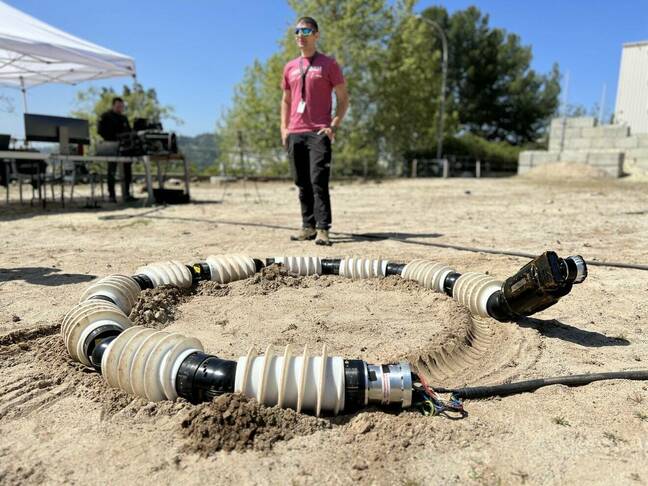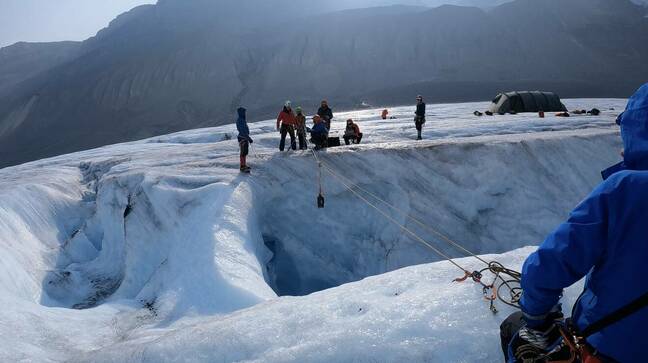NASA tests bot built to slither across, and beneath, alien worlds' ice
Wheels come off plan to explore Enceladus – in a good way
Video The latest in high-concept automated space exploration tech from NASA's Jet Propulsion Laboratory looks to have been screwed up and twisted – by design.
JPL's Exobiology Extant Life Surveyor, aka EELS, is an autonomous rover built by connecting articulated segments outfitted with corkscrews that give it the ability to "slither" across sand, snow, and ice. Archimedes would perhaps be astounded to learn that his screw is going out of this world.
"It has the capability to go to locations where other robots can't go. Though some robots are better at one particular type of terrain or other, the idea for EELS is the ability to do it all," said JPL's Matthew Robinson, EELS project manager.
The EELS team has been working on the project since 2019, and since last year has been testing its 220-pound, 13-foot (100-kg, 4-metre), ten segment EELS 1.0 in various environments, as shown in the video below. Several different corkscrews were made from plastic and metal for use in different types of terrain.
EELS has recently slithered out of the lab and into mobility tests, during which JPL boffins have worked to build a library of "gaits" for use in different types of terrain. The final version of EELS will be equipped with 48 actuators to help get it into a variety of configurations for navigation in different environments – like down steep crater walls or wedged between two sides of a chasm.
- MIT researchers propose modular, multi-mission Moon robots
- NASA's space nuclear power program is a hot mess
- NASA names astronauts picked for next Artemis Moon test flight
- To explore caves on Mars and the Moon, take a hint from Hansel & Gretel, say boffins
While the current version [PDF] operates on a tether for power and communications, the ultimate goal is for EELS to be self-sufficient. It's therefore been built with the ability to map its environment in 3D using a pair of stereo cameras and lidar. That data is fed to a navigation algorithm that chooses the safest path forward and the appropriate type of movement needed to traverse the terrain.
"Imagine a car driving autonomously, but there are no stop signs, no traffic signals, not even any roads. The robot has to figure out what the road is and try to follow it … Then it needs to go down a 100-foot drop and not fall," said Rohan Thakker, EELS's autonomy lead.
There are no scientific instruments onboard EELS right now. The team is focusing on finalizing its movements and validating its sensors work.
EELS has already been tested underground. Future tests will see it visit the Athabasca Glacier in the Canadian Rockies, before more subsurface mobility trials in different environments.
If and when it reaches mission readiness, JPL said that EELS could be used to explore glaciers on Earth, lava tubes on the Moon, or even the oceans and icy surface of Saturn's moon, Enceladus. But EELS is not attached to any mission as yet.
NASA has previously shown a liking for eel-like robot explorers. In 2015 it slung some cash at a swimming contraption that could use electrodynamic power scavenging tech to explore the seas of Jupiter's moon Europa.
Meanwhile, the European Space Agency has pondered lowering round probes into the ground to map subterranean environments, or swarms of breadcrumb-dropping bots that could build mesh networks to help themselves navigate. ®


